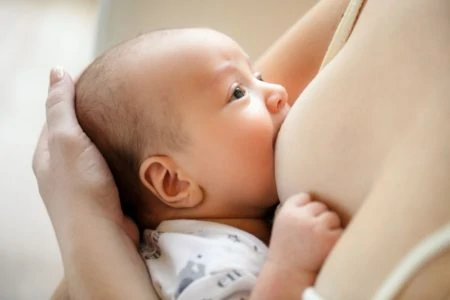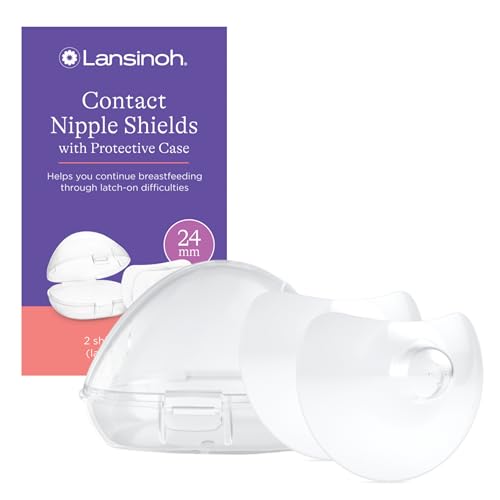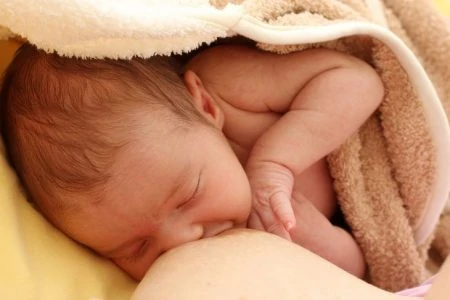Let’s be real for a second. You probably had a vision of breastfeeding that involved peaceful snuggles and effortless latching. If reality looks more like tears, toe-curling pain, or a baby who just can’t seem to grab hold, you aren’t failing. You might just need the right tool to get over the hump.
That is where a nipple shield comes in. These thin silicone layers can be a total game-changer for challenges like tongue ties, flat nipples, or a forceful letdown. But grabbing the wrong one can be just as frustrating as the problem itself.
We have been in the trenches of early motherhood, and we know that comfort is non-negotiable. To help you save your breastfeeding journey, we reviewed the top nipple shields on the market based on fit, material softness, and design.
Below, we’ll guide you through sizing (it is tricky), how to use them correctly, and which shields are actually worth buying.
- Addresses specific breastfeeding situations
- Maximizes skin-to-skin contact
- 100% ultra-thin, soft silicone
- Hygienic and easy to clean
- 24mm size nipple shields
- For short term latch-on issues
- Protects sensitive nipples
- Great fit
- Includes a storage case
- Free from harsh chemicals
- Finest quality sourced materials
- 20mm in diameter
- 3 premium nipple shields
- 30-day money-back guarantee
- Non-toxic, BPA free
- BPA- and DEHP-free
- Available in single purchase
- Encourages latching
How To Choose the Right Nipple Shield
Back in the day, nipple shields were thick, rubbery, and pretty unappealing. Thankfully, things have changed. Modern shields are ultra-thin and designed to mimic the breast, but they aren’t one-size-fits-all. Here is what you need to look for to get a comfortable nursing session.
Getting the Size Right
This is the most critical part. If the shield doesn’t fit, it won’t work. Nipple shields are sized in millimeters (usually 16mm, 20mm, or 24mm), based on the size of your nipple, not your areola or breast size.
You want a fit that allows your nipple to extend into the shield without rubbing against the sides, but not so big that your areola gets pulled in too deep.
- Too Small: Your nipple will rub against the silicone tunnel. This causes friction, pain, and can even restrict milk flow.
- Too Large: The shield might slide around or gag your baby. It can also cause air gaps that make suction difficult.
The best move is to measure your nipple diameter (at the base) in millimeters after a feed or pumping session. If you can, ask a lactation consultant to size you. If you are eyeing a brand that doesn’t offer specific sizing, read the reviews carefully to see how it fits other moms.
Material Matters
Almost all modern shields are made of thin, food-grade silicone. It is hypoallergenic, odorless, and tasteless, which helps the baby focus on the milk rather than the tool.
If you have a silicone allergy, you will need to hunt for rubber or latex options, though these are much rarer. For moms with cracked or bleeding nipples, look for “contact” style shields made of ultra-thin silicone; they tend to be gentler on damaged skin while allowing body heat to transfer through to the baby.
Shape and Design
You will notice two main shapes: round (full circle) and contact (cutout).
- Standard/Round: These look like a sombrero. They cover more of the breast and generally stay on easier because there is more surface area for suction. However, they put a layer of silicone between your baby’s nose and your skin.
- Contact/Cutout: These have a section of the “brim” missing. This cutout is designed to go where the baby’s nose is. It allows for skin-to-skin contact, so your baby can still smell you and feel your warmth. We generally recommend this style for bonding and sensory input.
Product Reviews
We evaluated comfort, durability, and latch ease to bring you these top seven recommendations.
Medela Nipple Shield
Best for Skin-to-Skin Contact
Medela is a giant in the breastfeeding world for a reason. Their “Contact” nipple shield is widely used in hospitals and recommended by lactation consultants because the design makes sense.
The standout feature here is the cutout shape. Instead of a full circle of silicone, a portion is removed so your baby’s nose rests directly against your breast skin. This allows your little one to smell your scent and feel your warmth, which triggers natural feeding instincts and skin-to-skin benefits.
We love that the silicone is thin and pliable, making it feel less like a foreign object. It comes in three sizes (16mm, 20mm, 24mm), so you can actually get a tailored fit. If you want a shield that bridges the gap between bottle and breast seamlessly, this is our top pick.
Lansinoh Nipple Shield with Carrying Case
Best for Traveling
Hygiene is a huge concern when you are dealing with sticky milk and baby gear. Lansinoh solves the “where do I put this?” problem by including a protective carrying case with their shields.
These 24mm shields are made of ultra-thin, BPA-free silicone designed to maximize skin contact. Like the Medela option, they feature a cutout design to keep that essential physical connection with your baby.
The flexibility here is great; they don’t feel stiff or plasticky. If you are a mom on the go, or just trying to keep the dog hair off your breastfeeding gear, the included purple case is a lifesaver. It makes it easy to toss them in a diaper bag without worrying about contamination.
Philips Avent Nipple Shield
Best for a Realistic Nursing Experience
The Philips Avent shield uses a unique butterfly shape that offers arguably the most skin exposure of the bunch. Because the wings are narrow, your baby’s chin and nose both touch your breast, creating a very realistic feeding experience.
These are slightly smaller in overall diameter (just under an inch), which is great if you have smaller areolas or find large shields overwhelming. The silicone is odorless, tasteless, and designed to help babies latch easily, even if they are fussy.
One thing we noticed is the stability. Despite the smaller footprint, they stay in place well during active nursing sessions. If your baby gets frustrated by the feel of too much silicone, this minimalist design is a solid choice.
Momma Bear Premium Nipple Shield
Best Nipple Shield for Flat Nipples
If you have flat or inverted nipples, getting a latch can feel impossible. The Momma Bear shields are designed with a spiraled tip and a slightly textured base to help draw the nipple out and keep the shield from slipping.
They are made from food-grade, BPA-free silicone and are incredibly soft. The design includes multiple holes in the tip rather than just one large opening, which can help mimic a more natural milk flow for the baby.
We appreciate the cutouts on the side for skin contact. The textured base is the real winner here, though; it adds just enough grip to prevent the shield from sliding off once the milk starts flowing, which is a common annoyance with smoother brands.
Purifyou Premium Nipple Shield
Best Nipple Shield for Tender Nipples
Sore nipples need a break, and Purifyou delivers a gentle barrier. These shields are straightforward, non-toxic, and designed to minimize friction while your skin heals.
One of the biggest selling points here is the value. This pack comes with three shields, not just one or two. That means you can keep one in the nursery, one in the diaper bag, and one by the couch. No more frantic searching when the baby is crying.
They also offer a satisfaction guarantee. If the fit isn’t right or you just don’t like them, you can return them within 30 days. It is a low-risk option for moms who are experimenting to see if a shield will help their situation.
JLR Industry Nipple Shields and Collection Shells
Best Nipple Shield for Premature Babies
This is more than just a shield; it is a system. JLR Industry pairs their nipple shields with breast shells (milk catchers), which is brilliant for moms dealing with leaks or trying to build a stash.
While you nurse on one side using the shield, you can wear a collection shell on the other breast to catch the letdown that would usually soak into a nursing pad. For preemie moms who are working hard to save every drop of liquid gold, this combo is incredibly helpful.
The shields themselves are soft, food-grade silicone. They are easy to sterilize and flexible enough for smaller babies. Just remember to empty the collection shells frequently to keep things sanitary.
Ameda Contact Nipple Shield
Best on a Budget
Sometimes you just need a simple, effective tool without spending a lot. Ameda offers a reliable contact nipple shield that is available as a single unit, making it a very affordable entry point if you aren’t sure a shield is right for you.
The design features a significantly large cutout area, maximizing skin-to-skin contact. The silicone is BPA- and DEHP-free, ensuring safety for your newborn.
While it is a budget pick, it doesn’t feel cheap. It adheres well to the breast and is thin enough to encourage a good latch. If you need a backup shield or just want to try one out without committing to a multi-pack, this is the way to go.
How Do Nipple Shields Work?
Think of a nipple shield as a temporary bridge. It is a flexible silicone cap that fits over your nipple and areola (1). It has a small reservoir for the nipple and holes at the tip for milk flow.
When a baby sucks on the shield, it creates a vacuum that draws your nipple out and holds it in an extended position. This helps the baby latch deeply and triggers your letdown. It creates a firmer surface for the baby to grip, which is helpful if your nipples are flat, or if your baby is weak or premature.
While they are fantastic tools, they are usually meant to be temporary. The goal is often to teach the baby how to latch and then graduate back to the bare breast. Always loop in a lactation consultant to ensure you are using it correctly and have an exit strategy.
When Should You Use One?
You shouldn’t use a shield just for fun, but they are lifesavers for specific hurdles:
- Flat or Inverted Nipples: If your nipple doesn’t “pop out” when stimulated, babies have a hard time finding the target. A shield creates a defined shape for them to latch onto (2).
- Premature Babies: Preemies often have weak suction and tire easily. A shield makes the nipple easier to hold in the mouth, requiring less energy to feed (3).
- Overactive Letdown: If your milk sprays out like a fire hose, it can cause your baby to gag or clamp down. The shield can act as a buffer to pool the milk slightly and slow the flow.
- Tongue or Lip Ties: Babies with oral restrictions often struggle to maintain suction. The firm silicone helps them stay attached while you wait for a revision or therapy.
- Severe Pain: If you have deep cracks or bleeding, a shield acts as a Band-Aid, reducing friction so you can heal without stopping breastfeeding (4).
Tips for Success
Using a shield adds an extra step to nursing, but these tricks can make it smoother.
- Flip it Inside Out: To get a good suction, turn the brim of the shield halfway inside out, place it over the nipple, and then smooth the brim down. This pulls the nipple into the tunnel.
- Use Warm Water: rinsing the shield in warm water right before applying it helps the silicone stick better to your skin.
- Check the Flow: Ensure the holes in the tip are lined up with your milk ducts. Watch your baby’s jaw; deep rhythmic swallows mean they are getting milk.
- Don’t Ignore Pumping: Shields can sometimes reduce breast stimulation. If your baby falls asleep or doesn’t drain the breast, use a breast pump afterward to protect your supply and prevent clogged ducts.
- Clean It Often: Wash with hot, soapy water after every feed. Sterilize it once a day (boiling water or a steam bag) to prevent thrush or bacterial infections.

















